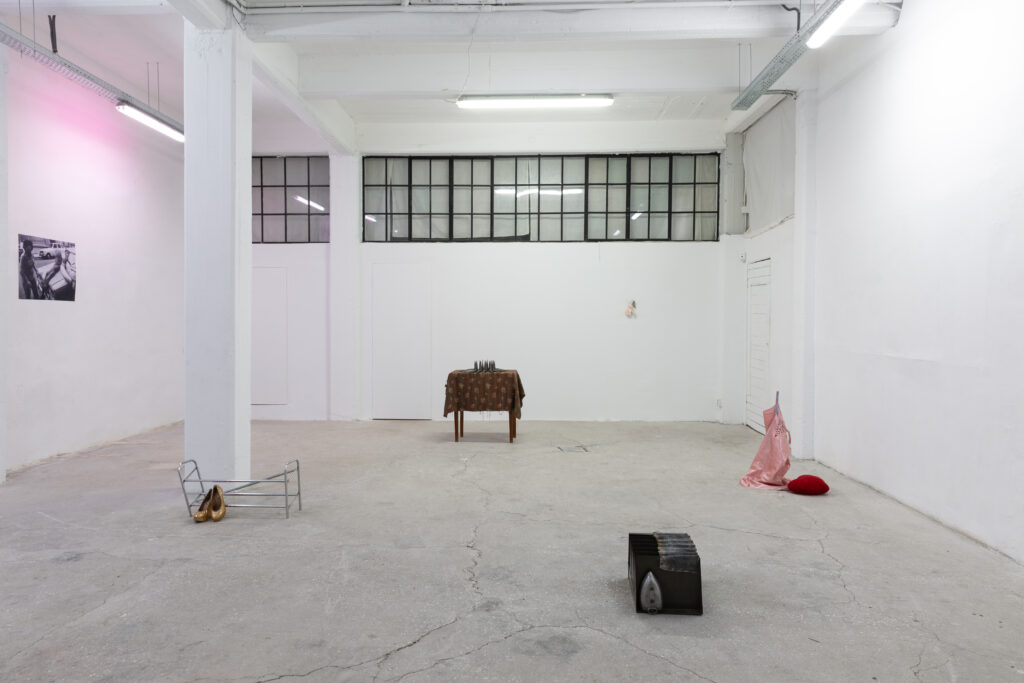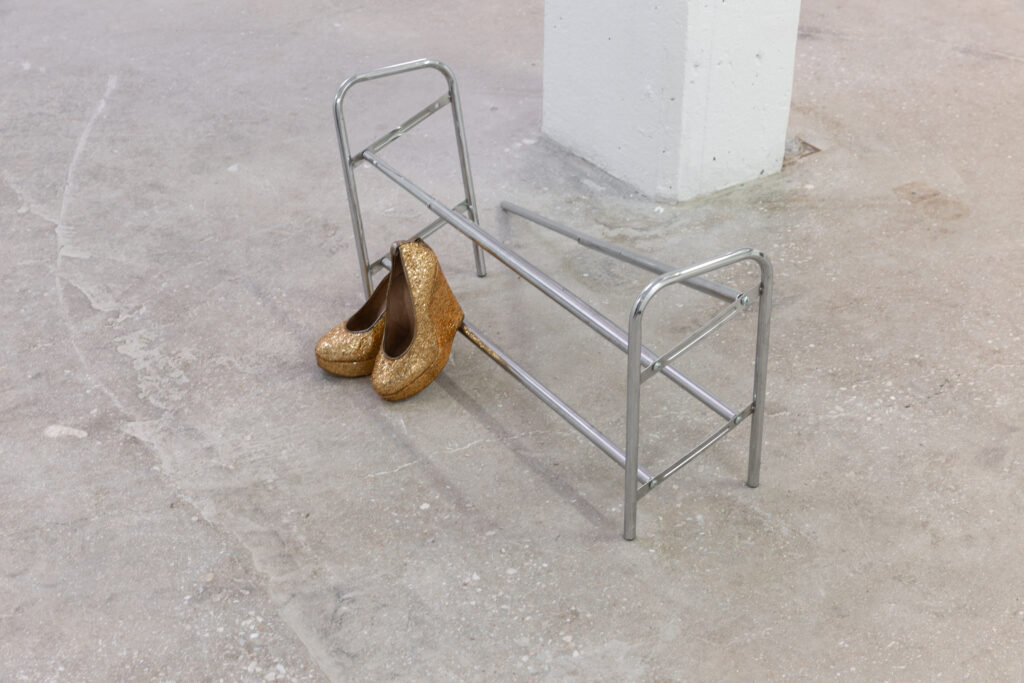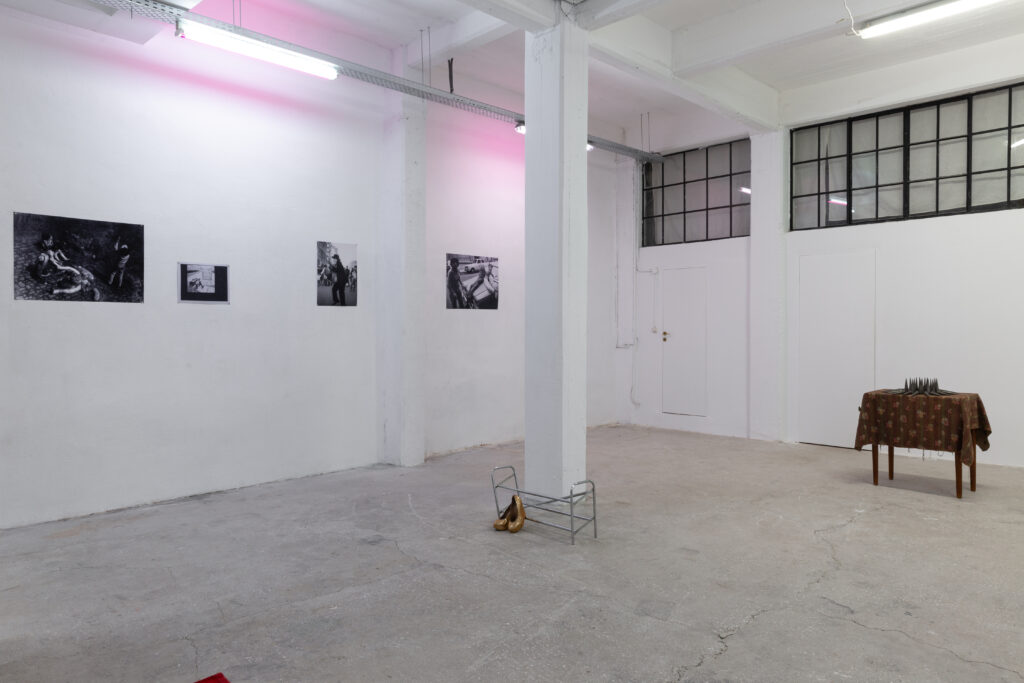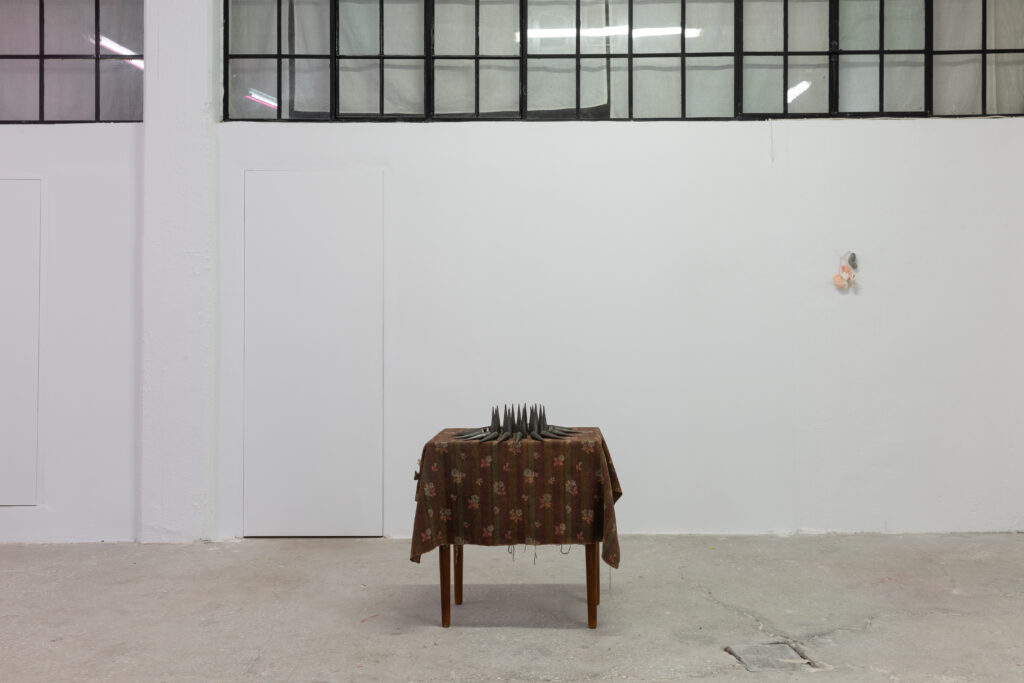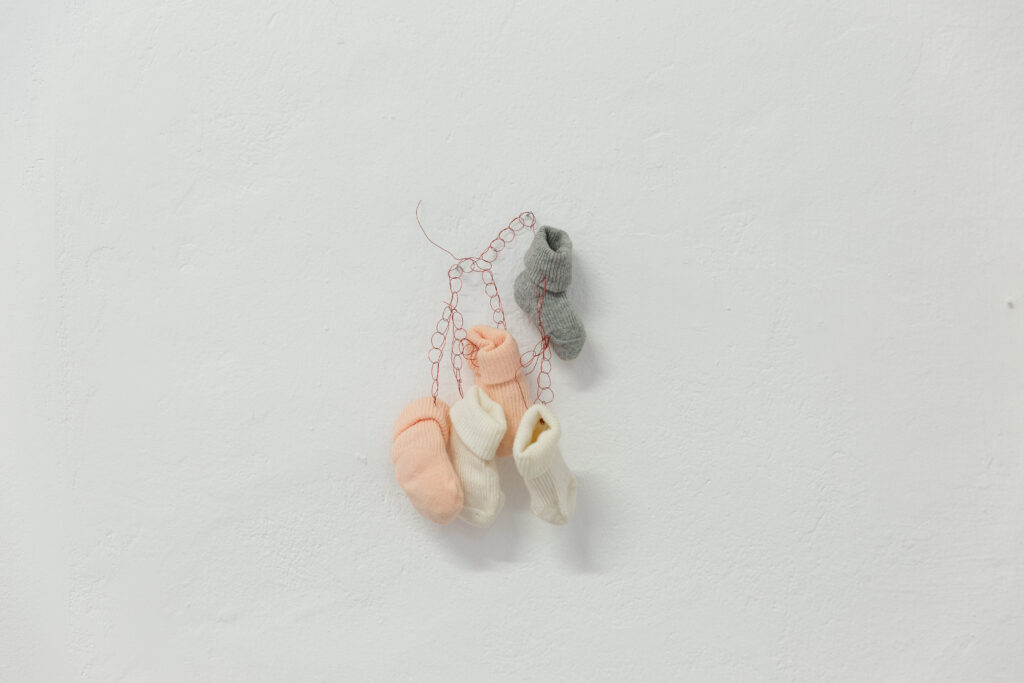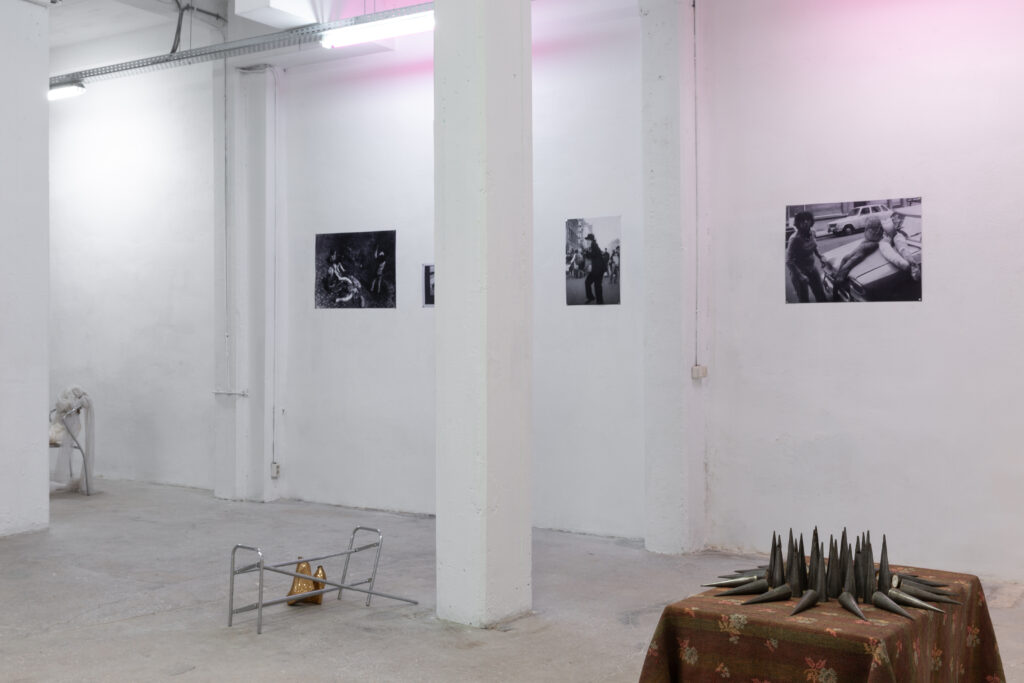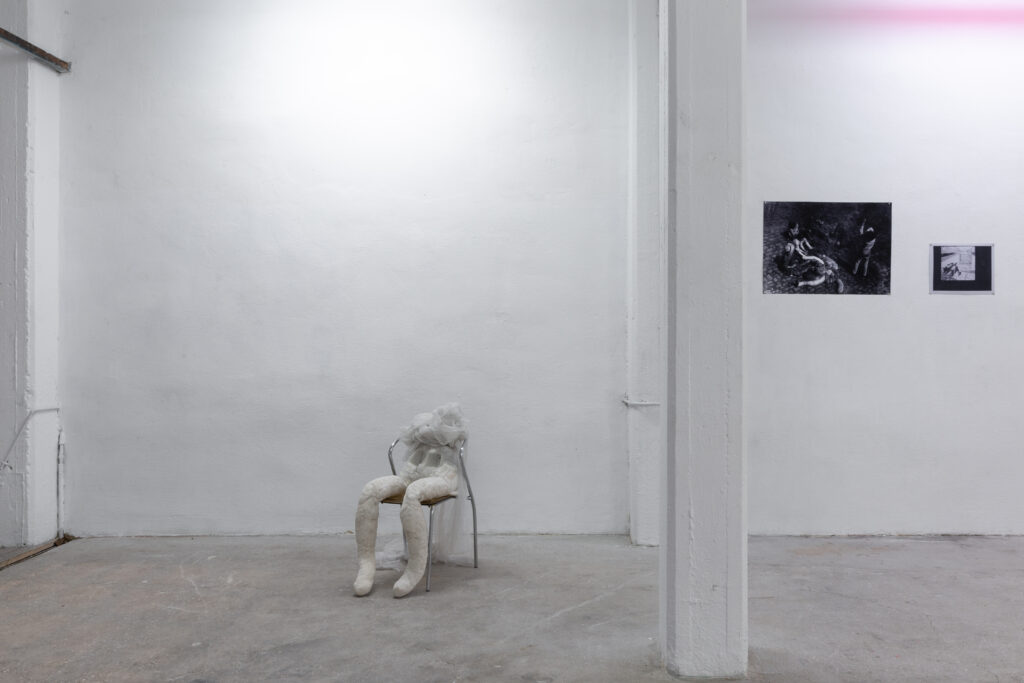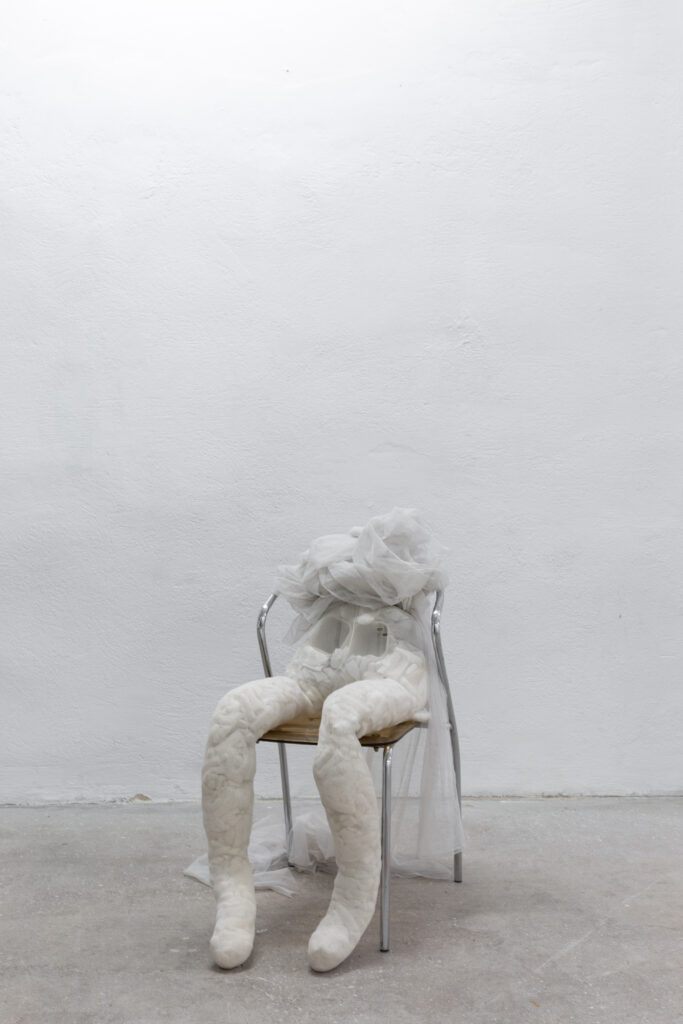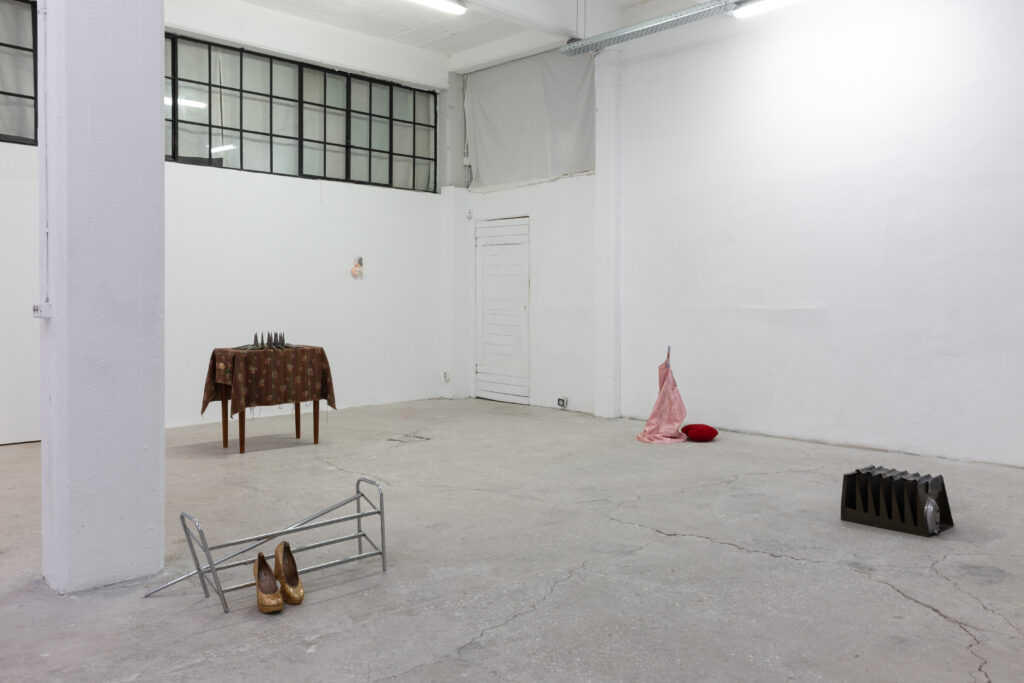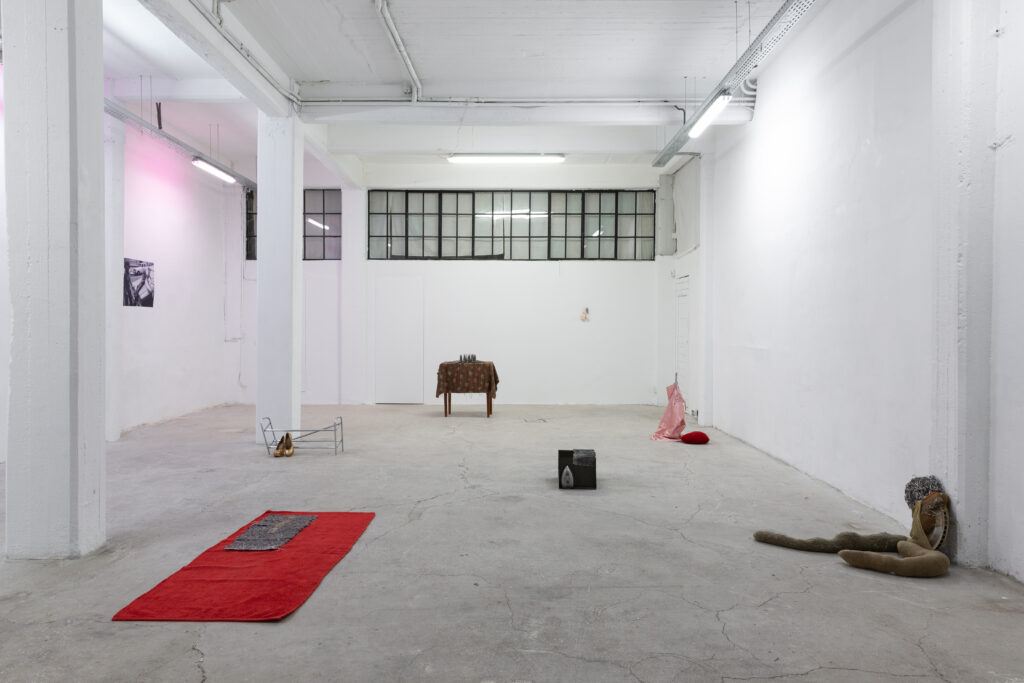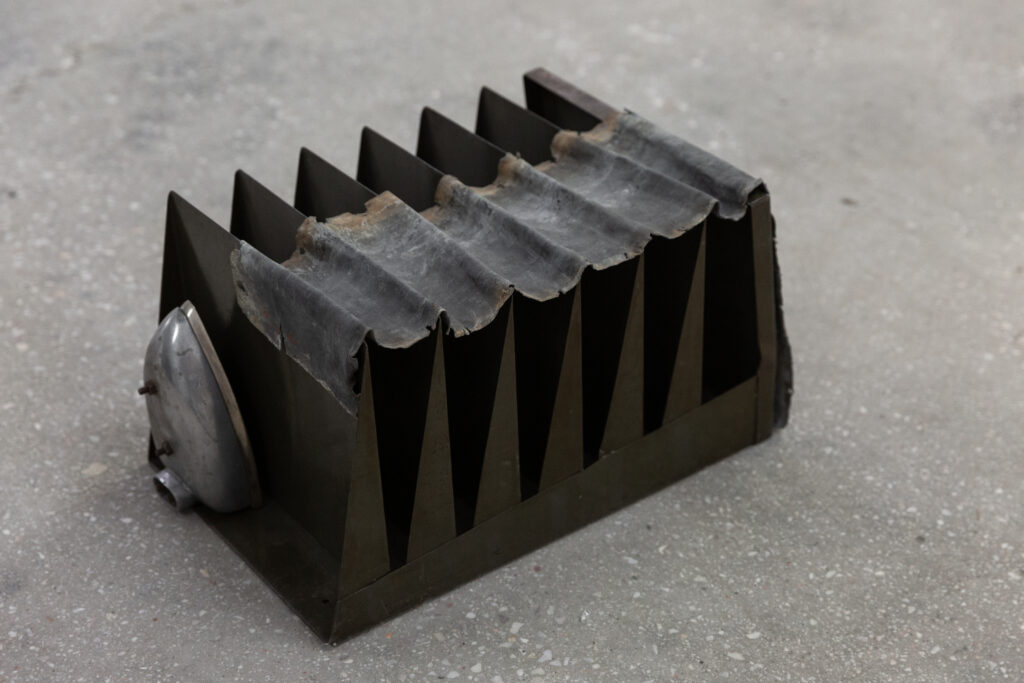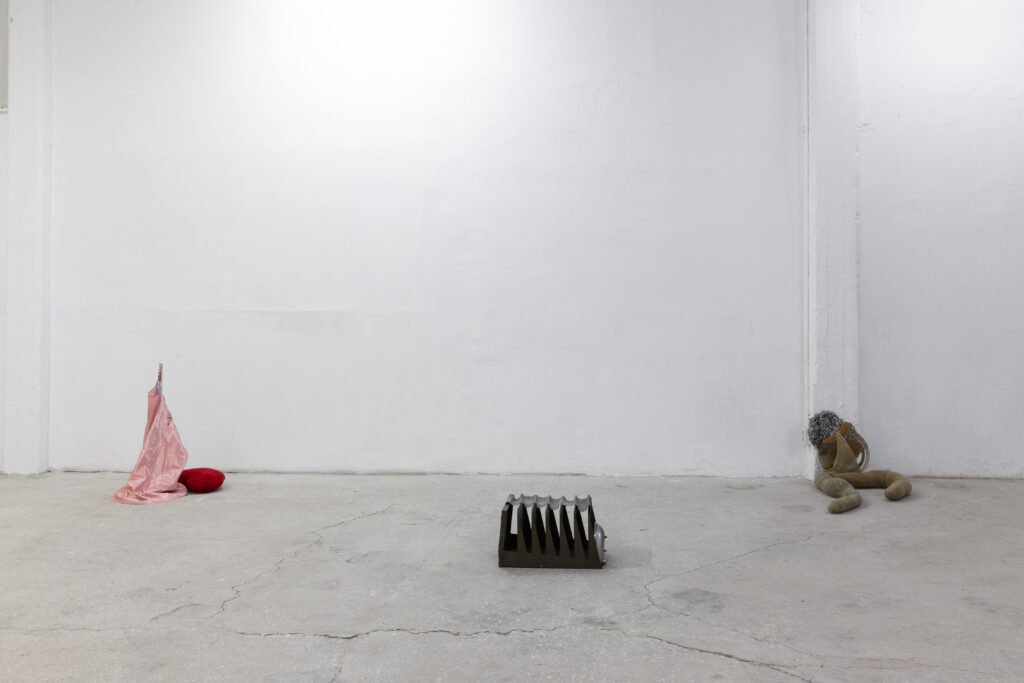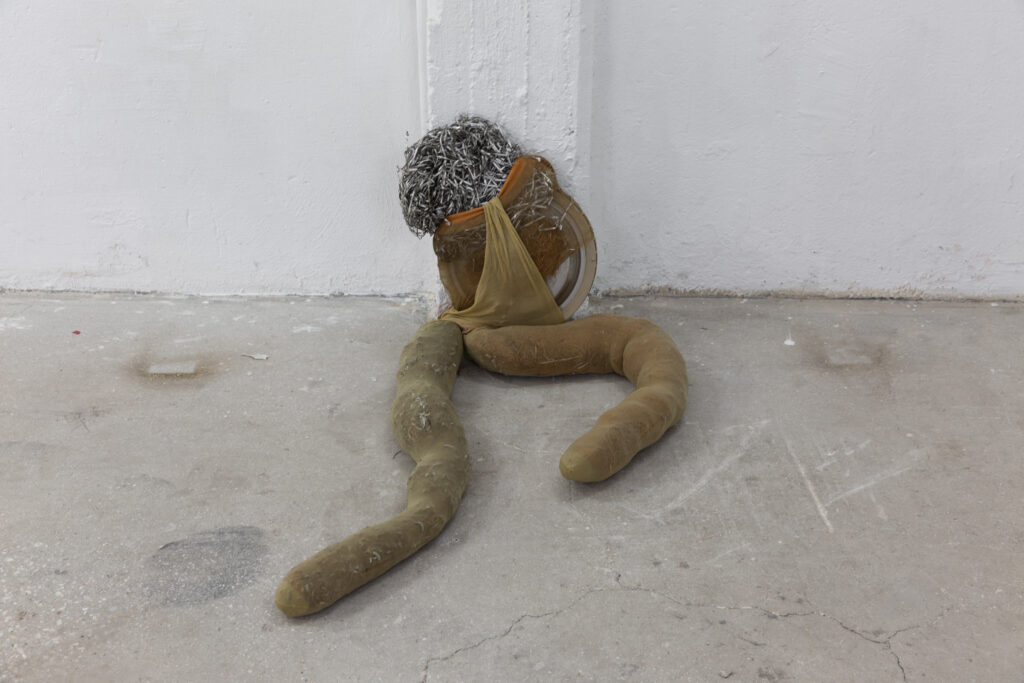A House is Not A Home, Marianne Berenhaut
🖤👁🖤 A house is not a Home on contemporary art library
Opening : September 17th, from 8pm
September 18th – October 26th 2024
Wed/Thur/ Friday 6-9; Saturday 1-4pm
and by appointment.
Alkinois 611852 Athens (Petralona)
September 17th- October 31st 2024
Contact Zone
My introduction to Marianne Berenhaut’s work was surprisingly both physical and emotional. A connection between the gaze and the affect was established through this retinal contact with her sculptures. The works, made from familiar objects, began to create new narratives in my mind.
These emotions quickly led me to question what kind of thoughts about the intimate and the social history might be revealed. Not wanting to engage in a psychoanalytic reading, it became clear to me that Marianne’ sculptures act as contact zones between different sensory worlds. These works play a major role in the concept of Affect Theory and extend the discussion surrounding the relationship between emotion, bodily sensation, and cognition.1
The exhibition A House Is Not A Home was conceived as an emotional journey through the body of work that Marianne Berenhaut has been developing for the past 60 years. A selection of eight sculptures and some archival images inhabit the space. The exhibition includes both historical pieces, such as the Poupées-Poubelles (Trash Dolls) 1971–1980, as well as works from the Vie Privée (Private Life) 1980–2000 series, and some more recent ones.
A House Is Not A Home is constructed with a body, footnotes, and margins, where some of her works appear outside the traditional exhibition space. Like a subjective extraction, the exhibition is designed as a perspective rather than a retrospective. Selecting certain pieces involves giving up others, thereby approaching the interpretation of her work through the absence.
Only You Are Missing
Creating from absence is perhaps the point of convergence between Berenhaut’s work and A House is Not A Home. The Maison-sculptures (House-sculptures), Marianne’s first sculptures from the 1960s, have disappeared accidentally. Made of rebar, burlap, and plaster, they appeared as modernist shelters or dwellings, open and fragile, ready to collapse despite their geometric forms. Marianne once said in an interview about these Maison-sculptures, “my source of inspiration was a gaping hole”.2 These early works were produced after she enrolled at the Brussels Academy of Fine Arts in 1964, in order to gain access to a production space. They inevitably bring us back to the traumatic void that the Holocaust represented for the artist. How can one build from absence, from the loss of foundational structures like family, or even a family home
Berenhaut’s sculptures do not answer these questions, but they operate in a way that seems to construct themselves around this void, this absence. For those who have experience the loss of family history, breakups and emotional disappearances, these works open up a semantic field of repair, catharsis, and healing.
Throughout her career, she has gathered, balanced, and held together worn or broken objects thats he continuously mended, stitched, and regenerated with gravity and tenderness, nomatter the materials used. After a serious accident that forever prevented her from using heavy objects, she had to invent a new way to make sculptures.
Nadine Plateau in “Conversation with Marianne Berenhaut”3
A strong dichotomy emerges from the intimate story and the formal aspect of the works. Made from assemblages of everyday objects found in her immediate surroundings, Berenhaut’s sculptures also exude a joyful and humorous aura. The Poupées-Poubelles featured in the exhibition evoke moments of delight while also introducing an element of uncanny strangeness. La Mariée (The Bride) 1971–1980 is made of white bandages, while Ville et campagne (City and dountryside)1971–1980juxtaposes a horsehair-filled leg with the other one made of shiny disco filaments.
Following the Maison-sculptures, the Poupées-Poubellesseries was developed between 1971 and 1980. Prevented from handling large and heavy materials due to an accident in 1969, Berenahut was forced to transition to lighter and softer ones. The emergence of these bodies made from stockings, like the shedding of a body skin, also resonates with the sexual, social, and feminist revolution post-1968. Each Poupée-Poubelle seems to embody so many characters into which we can project ourselves. Transparent being that reveal the layers of history, inhabiting a body that is sometimes languid, seated, or combative and upright.
Irony in the Tragic
The Poupées-Poubelles series, alongside the Vie Privée series (1980–2000), from which the exhibition presents Gâteaud’anniversaire(BirthdayCake)ViePrivéeseries,1993, as well as pieces from the 2000s to today, evoke a mix of extravagance, playfulness, and seriousness, also embracing a certain artifice. During both our conversations this year in her apartment-studios in London and Brussels, we discussed her way of working, the attention she pays to objects, and how, by manipulating them, she unconsciously generates a new identity for them as sculptures.
This formal intelligence can be compared to certain definitions of “Camp” given by Susan Sontag.4 In “Notes on Camp”, first published in 1964 and still a key reference on aesthetic notions, Sontag provides a list of 58 notes on what camp is or could be. Among them:
*”55. Camp taste is, above all, a mode of enjoyment, of appreciation, not an assertion of judgment. Camp is generous. Its goal: the enjoyment.”*
*”38. Camp is a way of experiencing the world aesthetically. It represents a victory of ‘style’ over ‘content,’ of ‘aesthetics’ over ‘morality,’ of irony over tragedy.”*
*ibid, p. 322*
*”56. There is love in Camp taste, the love of human nature. It relishes, rather than judges, the little triumphs and excesses of ‘personality.’ Camp taste values every object of its enjoyment. Those who possess this kind of sensitivity are not looking to mock the object they label as ‘Camp.’ They enjoy it. Camp is tender.”*
One Step, Then Another
From the 2000s onward, Berenhaut’s works have subtly excelled in manifesting sensuality. The body, of the absent and the present- is always passing through, from near and far.
Sculptures like Allons danser (Let’s Dance) 2018 or Un pas puis l’autre (One Step, Then Another) 2023, are situated between “the object and the living being”. A presence seems to have passed, leaving only the trace of its movement—sometimes unstable, stumbling, limping, or like discovering itself. Elleavaitlecœuràl’envers(HerHeartWasUpsideDown)2021can be seen as an act of sensual repair: the heart laid down, the weary dress, but the trace of the spine remains straight.
In Berenhaut’s work, the art speaks through the layers of contact that form her sculptures and the layers of contact with the viewer. They bring up emotions that circulate and produce effects, archiving sensitive presences—a kind of Library of Memory.
1 The Cultural Politics of Emotion, Sara Ahmed, Edinburgh University Press in 2004 p 5, in emotions & objects
2 Citation extraite du catalogue Marianne Berenhaut, Musée des Arts Contemporains de la Communauté française de Belgique, MAC’s, Grand-Hornu.
3 Conversation avec Marianne Berenhaut, Nadine Plateau, Editions TandemConversation, 2018
4 Notes sur « Camp, Susan Sontag, 1964
Marianne Berenhaut, born in 1934, Brussels, Belgium. Lives and works in Brussels and London. This exhibition is produced with the support of Wallonie-Bruxelles International (WBI), Institut français de Grèce.With special thanks to Dvir Gallery.
